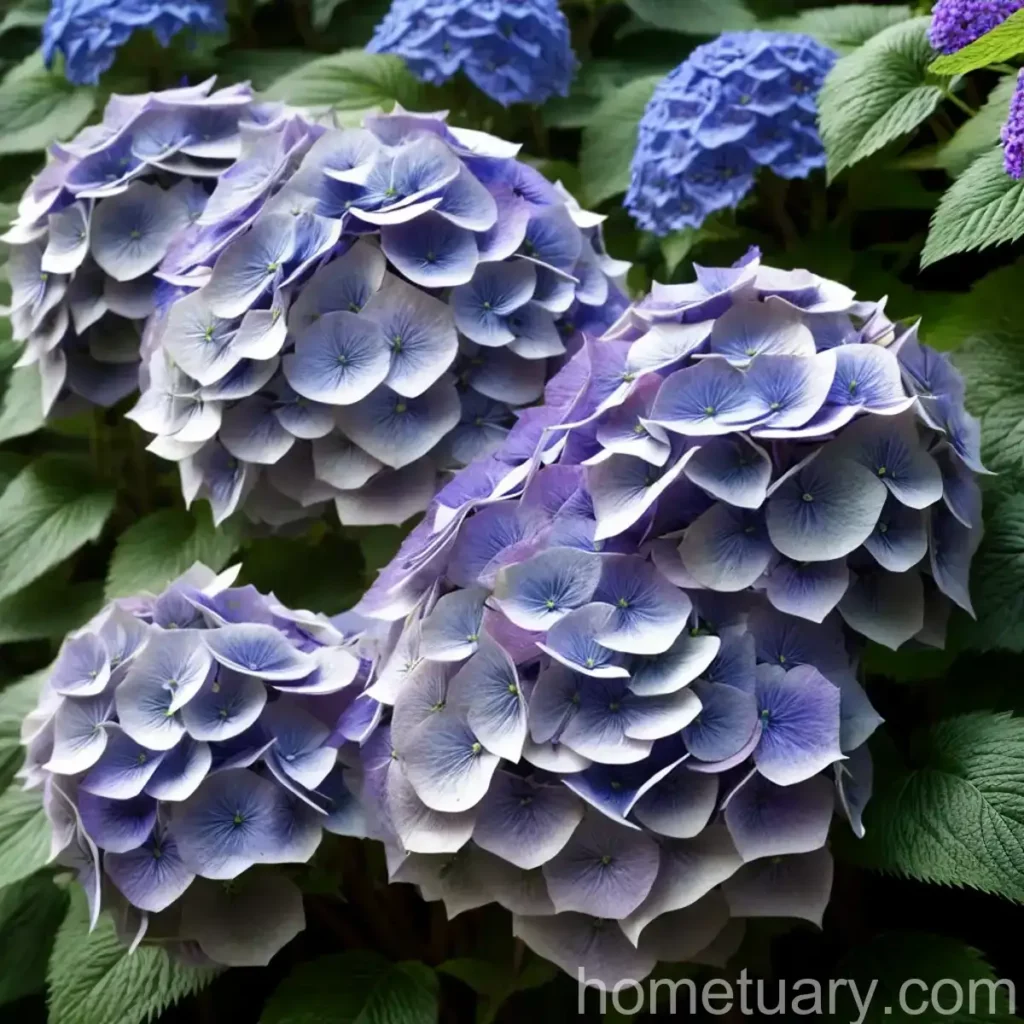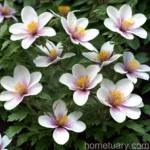False Hydrangea (Deinanthe Caerulea) – A Comprehensive Guide

False hydrangea, scientifically known as Deinanthe caerulea, is a striking perennial plant that is cherished for its delicate, bell-shaped flowers and attractive foliage. In this comprehensive guide, we will delve into the various aspects of false hydrangea, including its cultural needs, uses in landscaping, common diseases and pests, as well as tips for successful cultivation. Whether you are a seasoned gardener or a novice plant enthusiast, this article will provide you with valuable insights into the world of false hydrangea.
What is False Hydrangea (Deinanthe Caerulea)?
False hydrangea, also known as Deinanthe caerulea, is a flowering perennial plant that belongs to the Hydrangeaceae family. Native to Japan, China, and Korea, false hydrangea is characterized by its graceful, nodding clusters of blue or lavender flowers that adorn the plant in late spring to early summer. The species name “caerulea” is derived from the Latin word for “blue,” alluding to the striking azure hues of its blooms.
Key Takeaways – False Hydrangea (Deinanthe Caerulea)
Before we dive deeper into the specific aspects of false hydrangea care and cultivation, let’s summarize some key takeaways about this captivating plant.
False Hydrangea (Deinanthe Caerulea)
-
False hydrangea, scientifically known as Deinanthe caerulea, is a perennial plant prized for its bell-shaped flowers and attractive foliage.
-
It belongs to the Hydrangeaceae family and is native to Japan, China, and Korea.
-
The plant produces nodding clusters of blue or lavender flowers in late spring to early summer, adding a touch of elegance to the garden.
Now that we have a basic understanding of what false hydrangea is, let’s explore the various components of its care and cultivation.
Culture
Cultivating false hydrangea requires a keen understanding of its cultural requirements, including water, sunlight, fertilizer, soil, and pruning. By meeting these essential needs, gardeners can ensure the optimal health and beauty of their false hydrangea plants.
Water
False hydrangea thrives in moist, well-draining soil. While it appreciates consistent moisture, it is crucial to avoid waterlogged conditions, which can lead to root rot. During periods of prolonged dryness, providing supplemental watering can help maintain the plant’s vigor and promote prolific flowering.
Sunlight
In terms of sunlight, false hydrangea prefers dappled or partial shade. Although it can tolerate some morning sun, especially in cooler climates, it generally thrives in locations with indirect light or gentle, filtered sunlight. Excessive exposure to intense afternoon sun should be avoided, as it may cause leaf scorch.
Fertilizer
When it comes to fertilizer, applying a balanced, slow-release fertilizer in early spring can provide false hydrangea with the essential nutrients it needs for robust growth and abundant blooms. However, it is important to exercise caution and avoid over-fertilization, as this may lead to excessive foliage at the expense of flowering.
Soil
The ideal soil for false hydrangea is rich, well-draining, and slightly acidic. Amending the soil with organic matter, such as compost or well-rotted manure, can enhance its fertility and structure, creating a conducive environment for the plant’s root development and overall vitality.
Pruning
Pruning false hydrangea is a straightforward task that primarily involves the removal of spent flower stems and any damaged or diseased foliage. This practice not only maintains the plant’s aesthetic appeal but also encourages the production of new growth and flowers. Pruning is typically carried out after the plant has finished flowering, allowing ample time for the formation of new flower buds for the following year.
Propagation
False hydrangea can be propagated through various methods, including division, softwood cuttings, and seeds. Dividing mature plants in early spring or autumn is an effective way to create new specimens, while softwood cuttings taken in late spring can yield identical clones of the parent plant. Additionally, collecting and sowing seeds in a well-prepared seedbed can lead to the germination of new seedlings, offering another avenue for propagation.
Container Popularity
The compact size and graceful demeanor of false hydrangea make it well-suited for container gardening. Whether grown on a patio, balcony, or terrace, this plant adds a touch of elegance to outdoor spaces and provides an opportunity for gardeners with limited garden areas to enjoy its beauty up close.
Container Common Diseases
While false hydrangea is relatively resistant to diseases, container-grown specimens may occasionally be susceptible to certain issues. These may include root rot due to overwatering, powdery mildew in humid conditions, and leaf spot diseases caused by fungal pathogens. By ensuring proper watering practices, adequate air circulation, and vigilant monitoring, these potential diseases can be managed effectively.
Disease Diagnosis
Diagnosing diseases in false hydrangea involves careful observation of the plant’s symptoms, which may manifest as wilting, discoloration, or spots on the leaves. By conducting thorough inspections and seeking guidance from experienced horticulturists or plant pathologists, gardeners can identify the underlying causes of the plant’s distress and implement appropriate remedial measures.
Common Pests
In addition to diseases, false hydrangea may encounter pests such as aphids, spider mites, and scale insects. These tiny invaders can sap the plant’s vitality and distort its growth if left unchecked. Implementing integrated pest management strategies, including the use of insecticidal soaps, horticultural oils, or predatory beneficial insects, can help control pest populations and safeguard the health of false hydrangea.
Botanist’s Tips
Here are a few expert tips on caring for false hydrangea based on its specific needs and behavioral traits:
-
Mulching: Applying a layer of organic mulch around the base of false hydrangea can help conserve soil moisture, suppress weed growth, and insulate the roots during temperature fluctuations.
-
Deadheading: Regular removal of spent flowers can prolong the blooming period and prevent the plant from expending energy on seed production, encouraging it to redirect resources toward further flower production.
-
Winter Protection: In regions with harsh winters, providing a layer of protective mulch or surrounding the plant with a temporary barrier can shield it from cold, wind, and frost damage.
Fun Facts
As we explore the enchanting world of false hydrangea, let’s uncover some intriguing facts about this captivating plant:
-
Traditional Medicine: In certain cultures, false hydrangea has been used in traditional herbal medicine to address various health concerns, thanks to its purported medicinal properties.
-
Cultural Significance: False hydrangea holds symbolic significance in some societies, often representing sentiments of gratitude, understanding, and heartfelt emotions.
-
Wildlife Habitat: The nectar-rich flowers of false hydrangea have the potential to attract and support beneficial pollinators, such as bees, butterflies, and hummingbirds, contributing to the ecological balance of the surrounding area.
Now that we have gained insights into the cultural and practical aspects of caring for false hydrangea, let’s explore its uses in landscaping and delve into some recommended companion plants and garden design ideas.
Links to External Resources
For further information and resources related to false hydrangea (Deinanthe caerulea) and its cultivation, care, and uses, the following external links are provided:
- American Horticultural Society
- Royal Horticultural Society
- National Gardening Association
- The Plant List
- Missouri Botanical Garden
Conclusion
False hydrangea (Deinanthe caerulea) stands as a captivating addition to the world of ornamental plants, offering not only aesthetic appeal with its delicate blooms and attractive foliage but also a host of practical and ecological benefits. By understanding and addressing its cultural needs, utilizing it in landscape designs, and appreciating its inherent beauty, gardeners and plant enthusiasts can experience the charm and allure of this remarkable plant firsthand. Whether adorning mixed borders, rock gardens, or container plantings, false hydrangea invites us to witness and appreciate the magic of nature in our outdoor settings.















